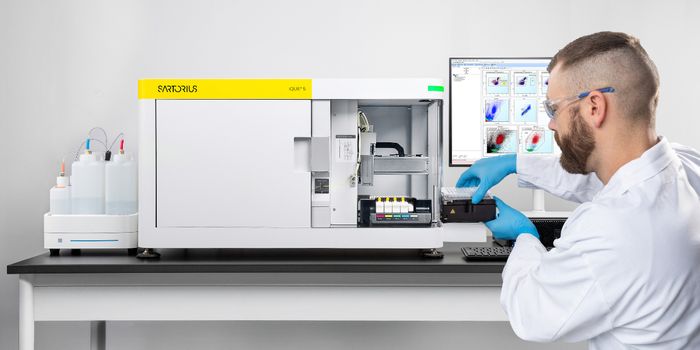Cancer Cells Migrate To 'Softer' Spots
The environments surrounding cancer cells are thought to promote cancer growth. Researchers have previously shown that cells can detect how stiff the stuff around them is, and there can be a wide range; it may be soft and fatty tissue, or it might be muscular tissue with medium stiffness, or very stiff bone, for example. For some cells, there is a certain tissue stiffness that is ideal for them, in which they can move and gain traction and it isn't too hard or soft. Now researchers have found that cancer cells can actually move towards certain places to find the right level of stiffness. That hardness affects how fast cells move, and which direction they take. The findings have been reported in Nature Materials.
“This discovery challenges the current thinking in the field, which is that cells only move toward stiffer environments,” said senior study author David Odde of the University of Minnesota Twin Cities. “I think that this finding will change how people think about this phenomenon. Our mathematical model predicted, and we’ve shown through experiments, that cells actually can move toward the softer side.”
In this work, the researchers assessed breast cancer cells as well as brain cancer cells, which were cultured between two kinds of environments. One of them was stiffer, while the other was softer. Then, the researchers watched as the cells gravitated to certain places.
They found that some cells are able to latch on to stiffer materials more strongly because they use a feedback mechanism in those areas. This seems to explain why cells have been found to move to stiffer places in previous studies. However, when the feedback mechanism was genetically deactivated, cells ended up moving toward the middle level of softness.
“We’re basically decoding how cancer cells invade tissue. They don’t just move randomly. They actually have particular ways in which they like to move, and if we can understand that, we may be better able to trip them up,” noted Odde.
Now, the scientists are interested in creating a simulation that will predict how cancer cells migrate within a whole tumor, and how that movement is affected by the environment.
Sources: University of Minnesota, Nature Materials









